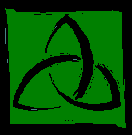The
Ancient Order of Hibernians (AOH) was organized in America in New York City
in 1836. The Ladies Ancient Order of Hibernians
was formed in Omaha, Nebraska
in 1984 as the “Daughters of Erin.” The organization pledged itself to God and country. In 1906, the National President of the AOH and National Chaplain gave permission to the ladies to function
as a separate organization. They changed the name to the “Ladies Auxiliary
to the Ancient of Hibernians in America.”
The ladies voted to change their name to “The Ladies Ancient Order of Hibernians” (LAOH) in 1984.
The
motto of the LAOH is “FRIENDSHIP, UNITY AND CHRISTIAN CHARITY.” Our
patron saint is Saint Brigid. We celebrate her feast day on February 1st.
The preamble of our constitution states that the intent and purpose of the ladies is to promote Friendship, Unity, and Charity
among its members, assist the people of Ireland to establish an Irish Republic, aid
the aged, sick, blind and infirm members. Today, Hibernians are primarily a Catholic Action group; our work is the propagation
of our Holy Faith.
Trinity, Division 4, was
founded on September 28, 1998.
In Christianity, the doctrine of the Trinity states that God is one being who exists, simultaneously and eternally,
as a mutual indwelling of three persons: the Father, the Son (incarnate as Jesus of Nazareth), and the Holy Spirit. Since
the 4th century, in both Eastern and Western Christianity, this doctrine has been stated as "one God in three persons," all
three of whom, as distinct and co-eternal persons, are of one indivisible Divine essence, a simple being. Supporting the doctrine
of the Trinity is known as Trinitarianism. The majority of Christians are Trinitarian, and regard belief in the Trinity as
a test of orthodoxy. More information can be found here.
The
Celtic Trinity Knot, or the Triquetra, is one of the most common of the knot ilk. The term Triquetra comes from Latin, and
it means "three-cornered." There are many schools of thought when discussing the Celtic trinity knot meaning.
All of the various interpretations agree on a culmination of thee
parts.
For example, early Christian understanding views the symbols as
the Father, Son and Holy Spirit.
Whereas, a more pagan school of thought sees the trinity knot
as the drawing of the three inherent feminine powers: Mother, Crone, and Maiden.
Still another understanding can be found in a more metaphysical
arena where the three corners represent mind, body and spirit. [For more interpretation on Celtic symbols, click here where this information was obtained.]

